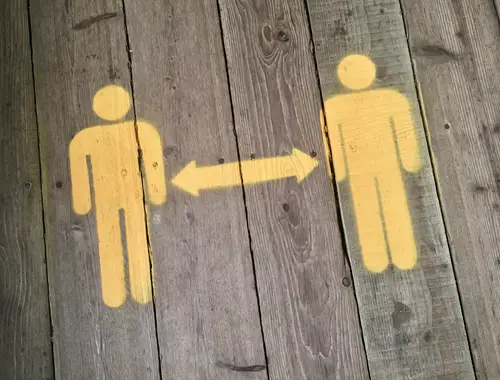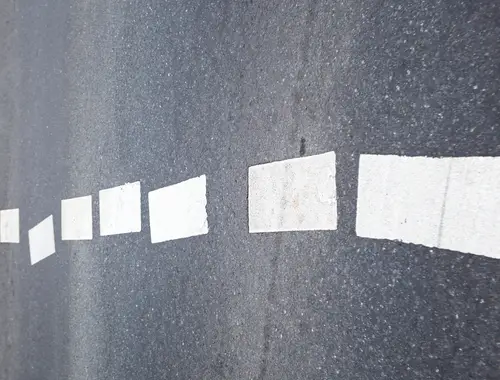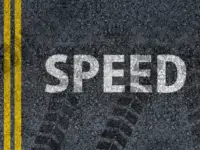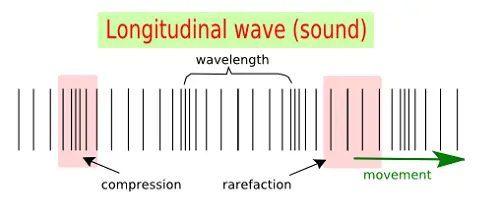In physics, distance and displacement can represent the length between two points. The distance and displacement may be the same when an object moves straight ahead or does not reverse direction.
The overall distance travelled, and a total displacement of an object stay constant if the object only travels in one direction along a straight path. So, for example, a boy will move the same amount overall and travel the same distance if he climbs the slope to the hill’s summit.

What is Distance?
The distance can be considered an object’s overall movement in any direction. Therefore, this distance can be defined as the amount of ground an object can cover, regardless of its starting or ending points.
We define distance as a scalar expression, which denotes the amount of space an object covers as it moves from one place to another. It considers the magnitude and disregards the direction because it is a scalar measure. In light of the real path, it thus provides a numerical number for the distance between two points at a particular time. Meters are the SI unit of length.
We can determine an object’s actual size by learning how far it is from us. For example, we can measure an object’s area in the sky. The distance to an object is necessary to calculate its real size because a thing appears smaller the farther it is away.

What is Displacement?
A vector called displacement points from an object’s initial position to its ultimate position. Simply put, displacement is the shift in position an object goes through as it moves.
The word “displacement” indicates a shift in someone’s or something’s location in a certain direction. It is the shortest distance between the moving body’s starting and ending points. Since it is a vector quantity, it considers both the object’s magnitude and direction. The magnitude of displacement point to the linear distance between two points.
Although it is possible to measure displacement along curved pathways, it is typically done along a straight line. Additionally, a reference point is taken into account when measuring. Displacement is an important notion in many applications in physics.
Similarities Between Distance and Displacement
The size or extent of the displacement between two points is referred to as distance. Observe that there is a difference between the distance between two points and the distance moved among them. Here are some parallels between displacement and distance.
Require A Reference Point from Which You Can Measure Them
A reference point is a location or object used as a point of comparison to ascertain whether something is moving. An object is in motion when it moves at a fixed location.
In physics, we enjoy explaining how an object moves exactly. However, before we can describe an object’s motion, we must be able to characterize its position—where it is at any given moment. Furthermore, in more detail, we must specify its position concerning a good reference frame. For example, we frequently characterize an object’s position concerning stationary objects in the Earth reference frame, which is a common reference frame.
The spacing between an object and a reference point determines its precise location. In addition, the observer’s reference frame, which measures a distance or displacement, affects the measurement. As a result, the work done on a body should consider the observer’s reference frame.
They Have the Same SI Unit
The meter is the SI unit of length. The world’s most extensively used system of measuring is the International System of Units, sometimes known as the SI system and abbreviated SI in all languages. It is the current version of the metric system. In the advancement of science and technology, SI units are essential. It comprises 7 base units, from which 22 derivative units are generated.
Both Have a Stopping Point
While measuring either displacement or distance, we require a stopping point or a terminating point.
FAQs
What is the difference between distance and displacement?
While distance and displacement signify the same thing, they have very different definitions and meanings. Distance is a scalar quantity that answers the question of “how much distance an object has travelled”. Displacement is an object’s overall change in position, and it is a vector number that measures “how much the object is out of place”.
How do you find distance and displacement?
Displacement is the length between two locations of an object in motion. Therefore, both the starting position and the ending position are significant. When displacement is applied, the distance between the starting and terminating locations is also the shortest.
What is a displacement example?
“Displacement” refers to a change in an object’s position. Displacement has magnitude as well as direction, hence called a vector quantity. It is represented by an arrow pointing from the starting point to the endpoint. A passenger moving to the back of an aeroplane or a lecturer moving to the right of a blackboard are two examples of how the position of an object concerning a reference frame might change. This location change is described as displacement.
What is the displacement formula?
Displacement refers to the idea that something has moved or been shifted. The definition of displacement is the modification of an object’s position. Displacement = Final position – initial position = change in position.
What is the formula for distance?
The Pythagorean theorem and the distance formula can be used to calculate the distance between two places. The Pythagorean theorem can be rewritten as √[(x₂ – x₁)² + (y₂ – y₁)²]) to calculate the distance between any two locations.












Leave a Reply